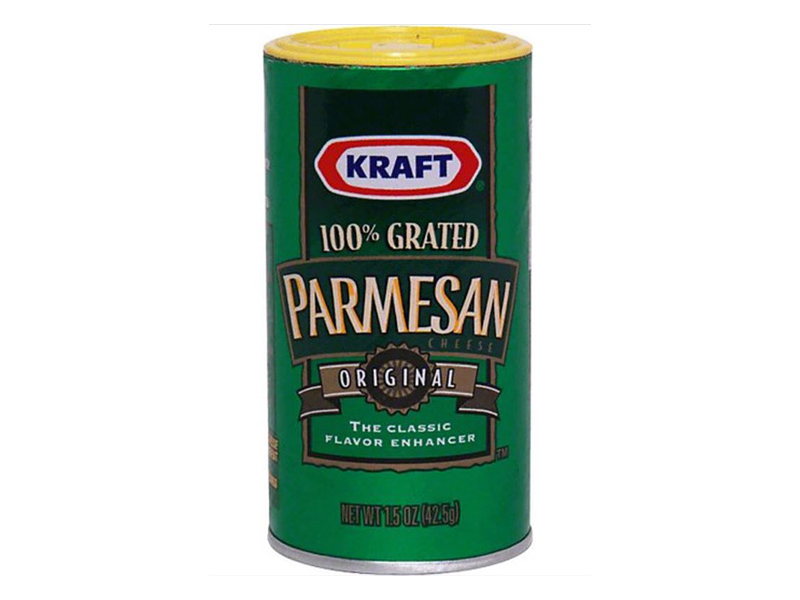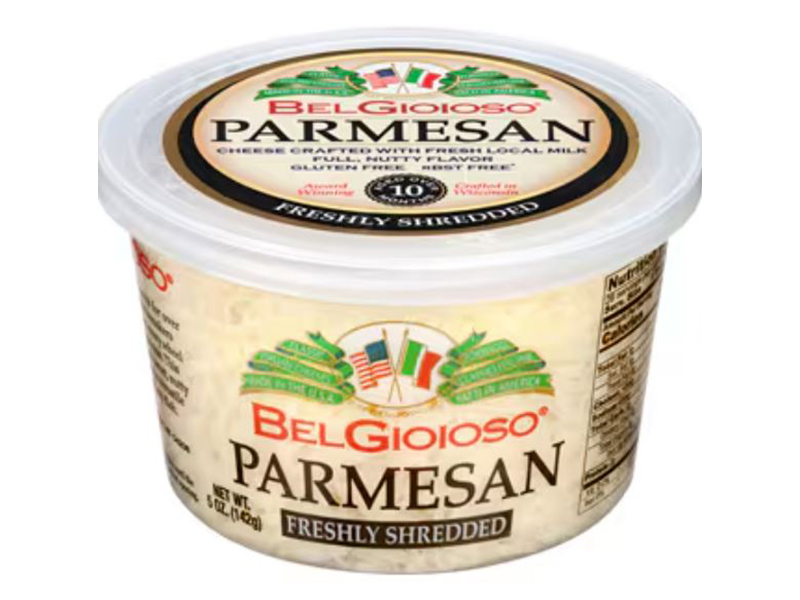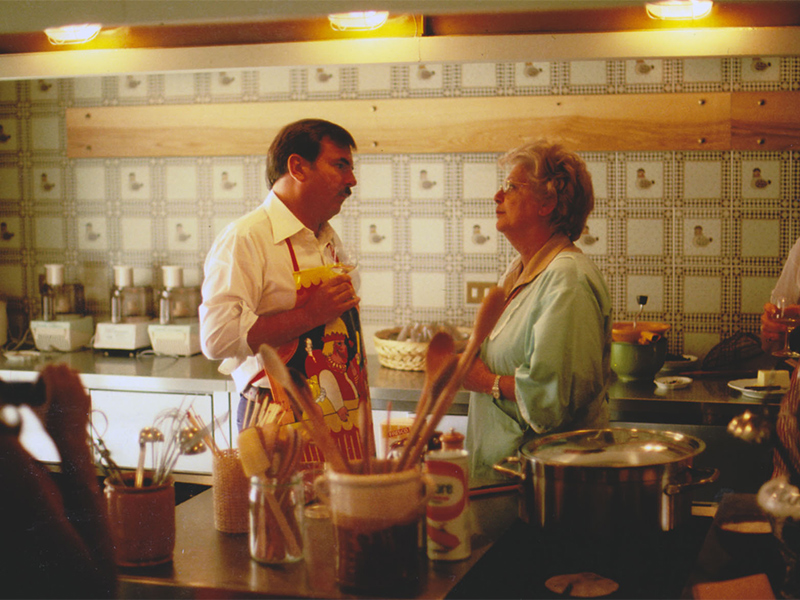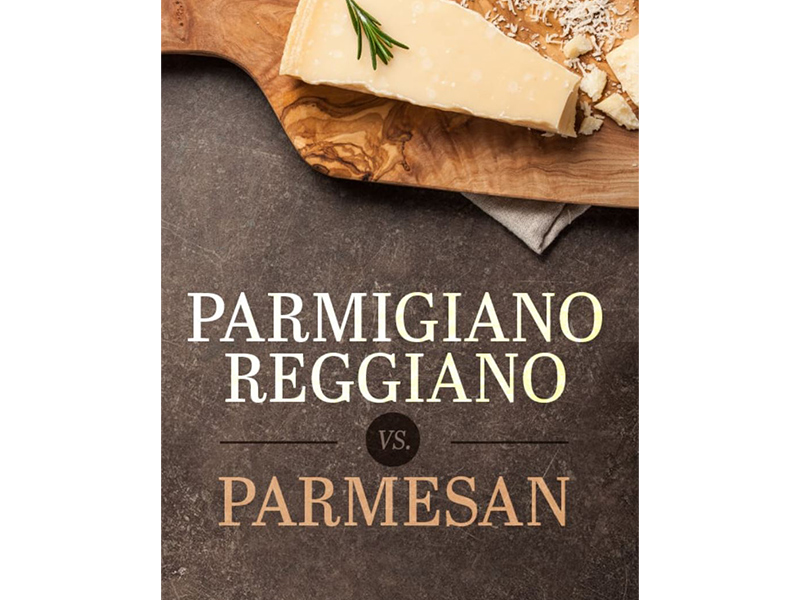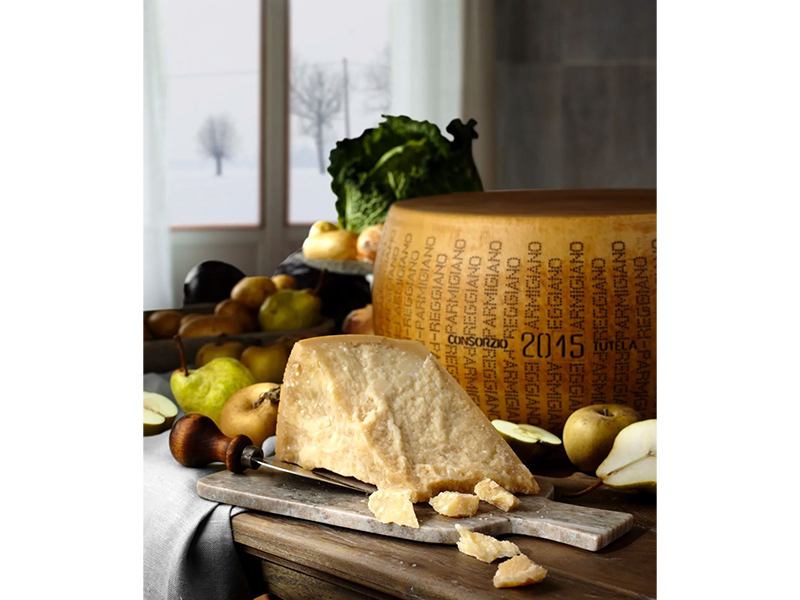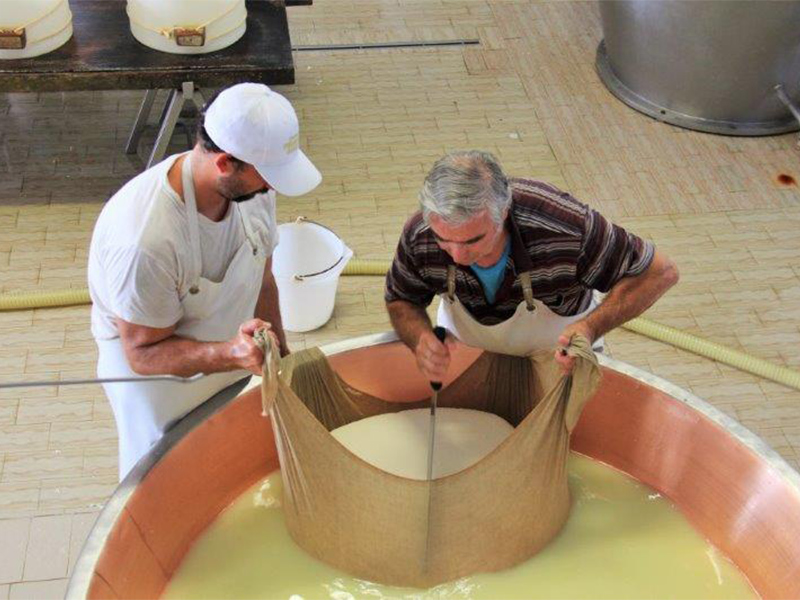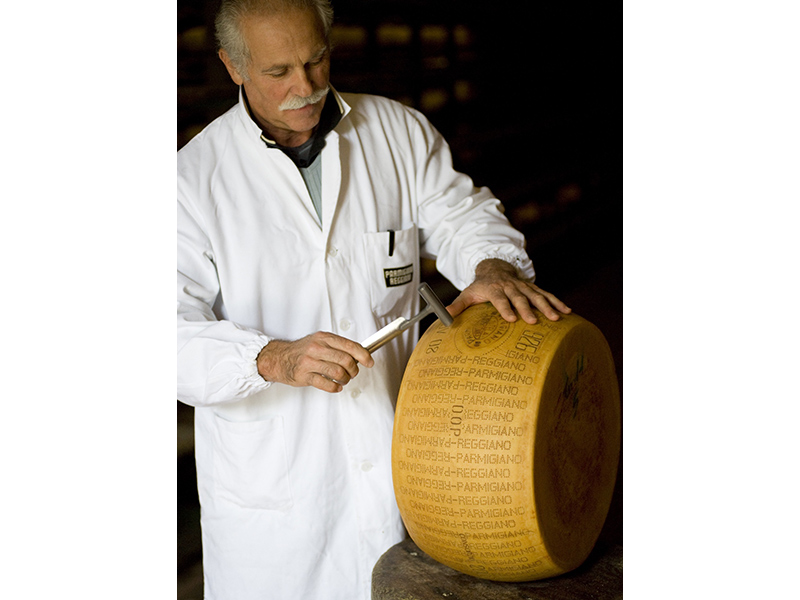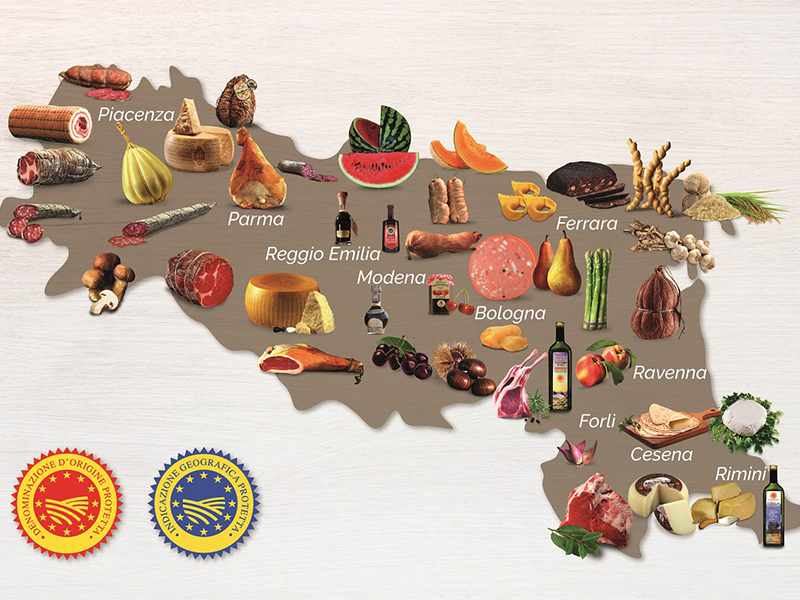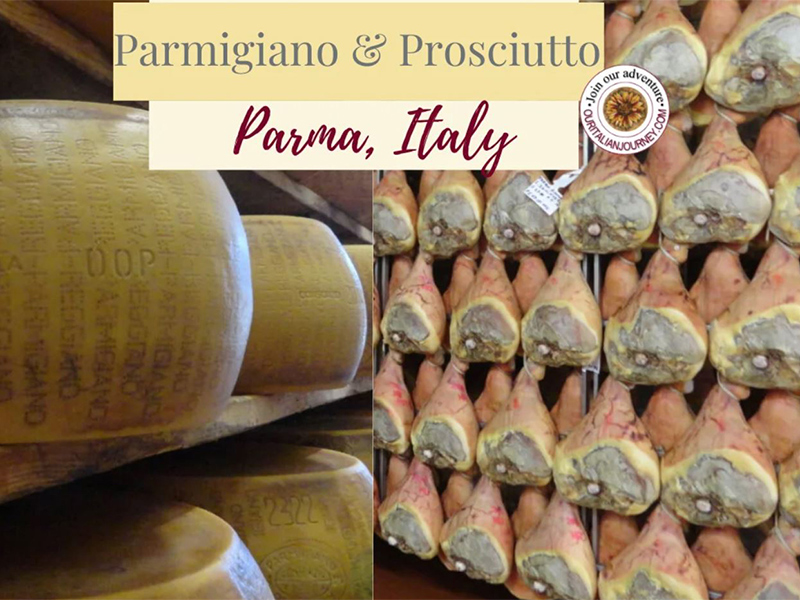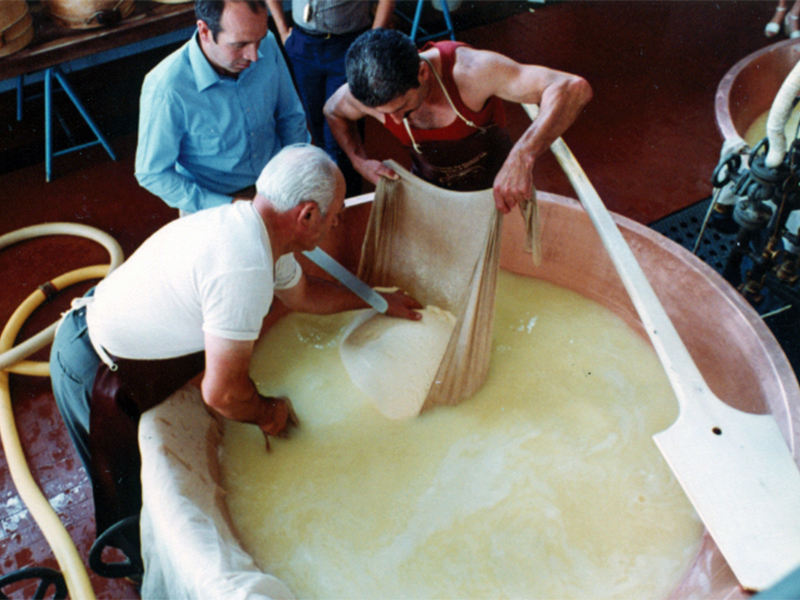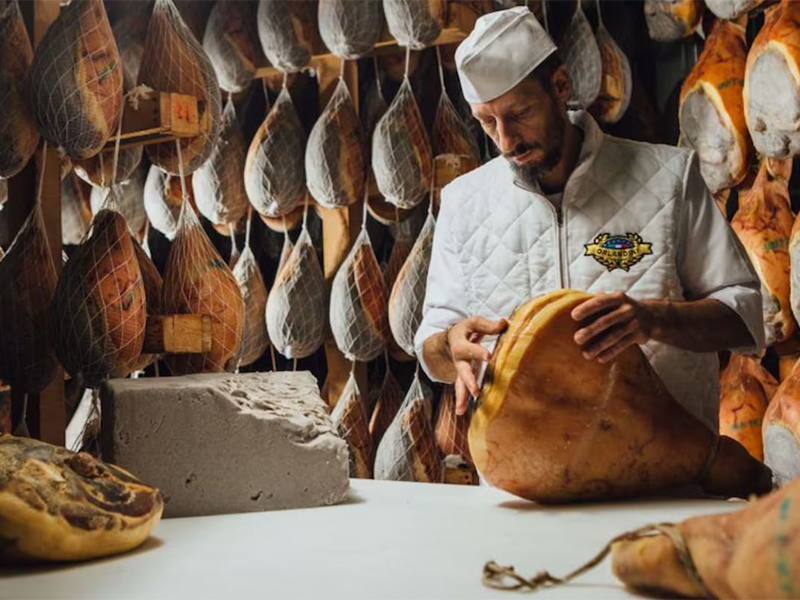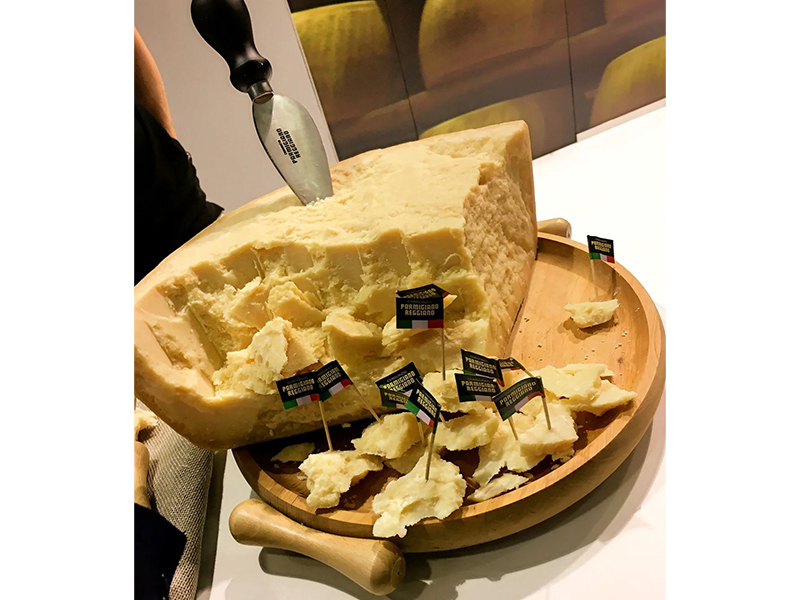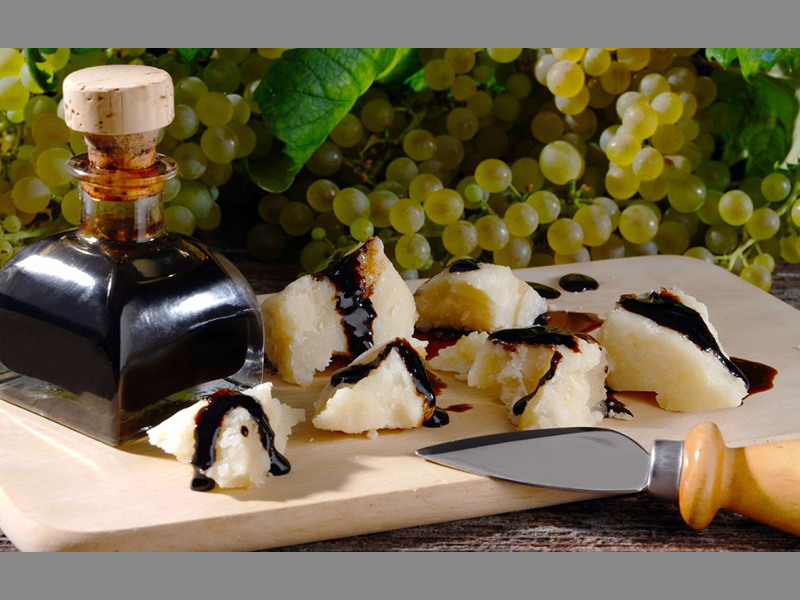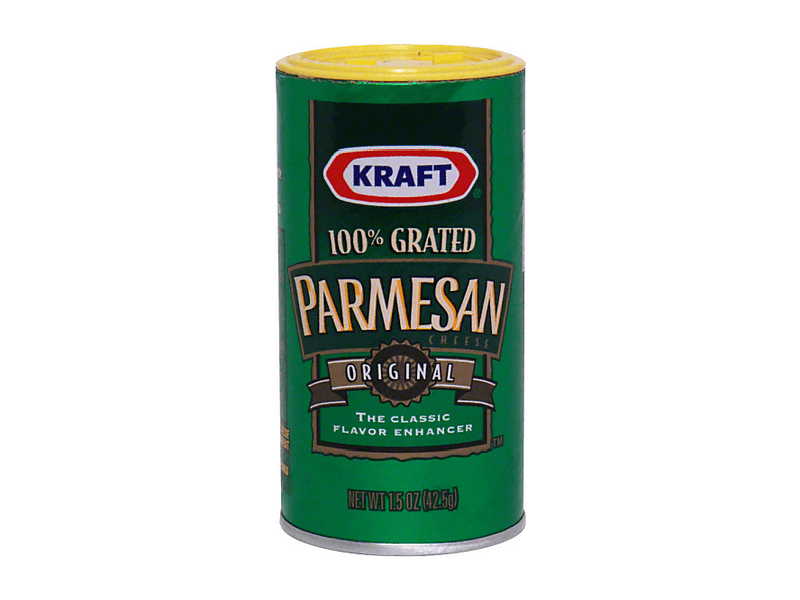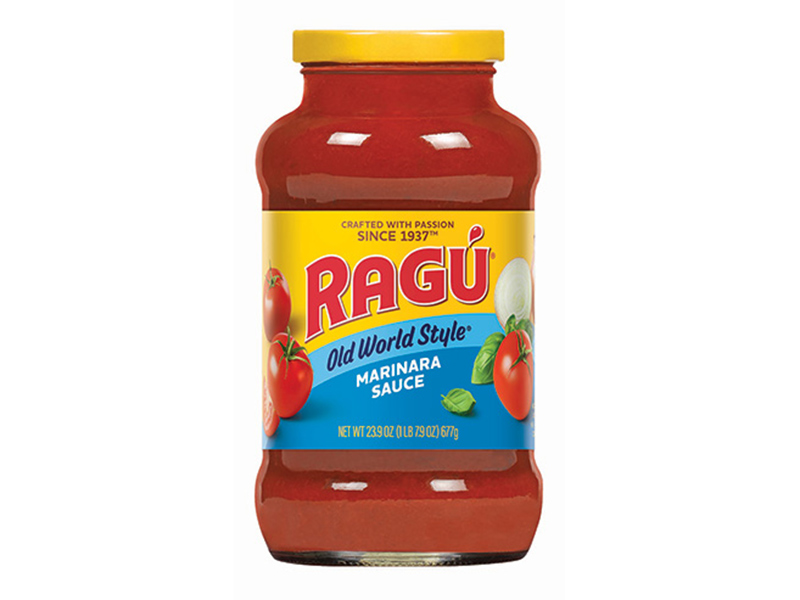Frequently, on Saturday afternoons, my Mom could be found hovering over the kitchen stove, crafting a simmering pot of “Eye-talian spaghetti sauce.” I marveled at the exoticness of it, especially since the smells coming from our kitchen were the same as those that wafted from the house of the mysterious and mystical Matroni family from Naples, Italy that lived down the street from us. They lived along my paper route, and when I dropped off the Chicago Sun-Times on Sundays, I often smelled the sauce simmering in their kitchen.
What I didn’t realize at that time was that Italian spaghetti (Creamette’s, from the A&P) was my mother’s way of stretching our sparse food budget in order to put dinner on the table for our extended household family of seven – two grandmas, an aunt and uncle, my mom and dad, and little me.
When we all sat down for supper at five o’clock, all eyes focused on the center of the table, where my mother placed the big honkin’ platter of spaghetti, smothered with the magical, mystical tomato sauce. The sight took my breath away.
What was also dead center at the table: a bright green cardboard can of KRAFT PARMESAN CHEESE – ”the classic flavor enhancer.” At first, we were all a little timid about what to do with this curious, new-fangled product, so we only sprinkled a few granular bits on top of our spaghetti. But we soon discovered that we really liked Kraft Parmesan Cheese, and later the spaghetti-laden supper table was set with two cardboard cans. When you said the word “Parmesan” in our house, you thought of Kraft.
Over the next several years, I discovered more upscale versions of grated Parmesan cheese – the tastiest being SARTORI from Wisconsin. American Parmesan needs to be aged 10 months, and that was a Sartori selling point.
Sometime later, when I came across un-grated Parmesan, I also learned not to grate it ahead of time. It gets flat, nasty and tasteless real quick.
Now let’s fast-forward a few decades to Bologna, Italy, where I attended Marcella Hazan’s cooking school.
WOW!…BAM!…POW!…KAZOWIE! That’s when I discovered PARMIGIANO REGGIANO CHEESE!!!
First, let me explain.
Parmigiano Reggiano is made using a centuries-old process that is extremely tightly regulated. For a cheese to bear that name, it must come from the Emilia Romagna region in northern Italy and contain only three ingredients: unpasteurized milk from certain breeds of grass-fed cows, salt, and rennet (a potent liquid derived from a young milk-fed calf’s stomach).
The Designation of Origin (DOP) that guarantees authenticity is strictly enforced and protected by the Italian government. Furthermore, the cheese must be aged a minimum of one year (and up to four years) and pass a rigorous inspection from the DOC. The government authorizes only 300 makers and, by law, each is allowed to produce only 26 wheels per day.
The cheese-making process begins early in the morning with the milk being delivered to an approved facility no later than 8:00 AM. The milk is poured into heated copper vats, rennet is added, and soon curds begin to form. They’re broken up until the milk begins to coagulate into a single mass.
Now the cheese is lifted out and drained, leaving behind the whey (remember Little Miss Muffet?) which is formed and placed into molds to set. That’s when the dotted inscription that circles the entire wheel is impregnated into the rind. Then the wheels are transferred to a salt bath for twenty days in order to harden the rind. Afterward, the producers deliver the 72 lb. wheels to massive, humidity and temperature-controlled aging consortiums where they reside up to four years.
The result?
Over the months, an aroma, texture and flavor will evolve that is at once complex, earthy, salty, nutty, and moderately sharp, with notes of umami. The cheese also assumes an almost crunchy texture.
BUT STOP!!!!
Here’s a little sidebar that I’ll bet you didn’t know.
Parmigiano Reggiano isn’t the only food that Emilia Romagna is known for worldwide. BALSAMIC VINEGAR is another (I’ll save that for a future posting).
And then there’s PROSCIUTTO DE PARMA, which comes from pigs that consume the vast amount of whey left over each day in the Parmigiano copper vats from throughout the region.
The nutritional properties of the potent, high-quality protein in whey provide a jump-start for fattening up the young Prosciutto piglets and getting them started on the path toward the finest air-dried hams on the planet.
In some respects, the production of Prosciutto is not dissimilar to that of Parmigiano Reggiano. It’s highly, highly protected by strict standards, with only certain breeds of pigs authorized to become Prosciutto. They must be born and raised in Emilia Romagna and their flesh air-aged in a huge consortium (CONSORZIO DEL PROSCUITTO). The final product is carefully inspected by official regulators who alone are authorized to give it the Designation of Origin.
So there.
Now back to Parmigiano.
Chunks pried right off the wheel are wonderful all by themselves as a snack. Restaurants frequently put on a show and toss pasta directly in the big wheel tableside (sometimes even flaming it).
In cooking school, we frequently ended our meal with fresh chunks of Parmigiano and drops of 25-year-old Balsamic vinegar, and occasionally we prepared grilled cheese sandwiches filled with melty dark chocolate and Parmigiano Yeah, yeah, I know. But try it, you’ll like it.
You’ll also love cheesy-roasted cauliflower laced with Parmigiano and heavy cream. And don’t throw away the rind! Add it to soups and stocks. For your next party, surprise your guests with Parmigiano chunks dipped in chocolate sauce that is no less than 70% cocoa. And give yourself permission to splurge a little on movie night at home by dusting your buttery popcorn generously with freshly grated Parmigiano Reggiano. Don’t skimp.
So, here’s the rub: it’s pretty expensive – about $20 a pound. However, COSTCO sells the real thing – a two-year-old Parmigiano Reggiano – for about $12 a pound. Domestic Parmesan runs about $3 – $6 for 8 ounces.
I have a confession (HUSH! HUSH!): I don’t always use the real thing on my pasta. Perhaps it’s a childhood thing, or maybe pure convenience. But on rare occasions, I’ve been known to pop open a lid of pasta sauce and a bright green container of “you-know-what.” It’s my ultimate comfort food.
And as a local restaurateur, I just don’t want to be caught at Lunds-Byerlys with that bright green container in my cart. I’m still recovering from being discovered a couple of years ago with a jar of CHEEZ-WHIZ at the checkout.
W.T.F.
PHIL
